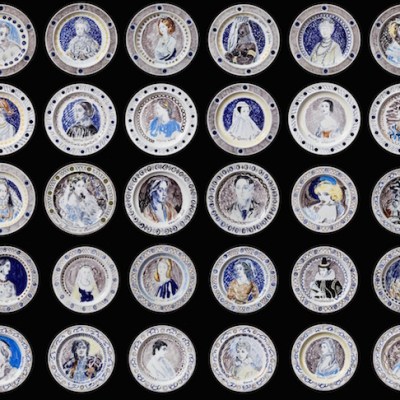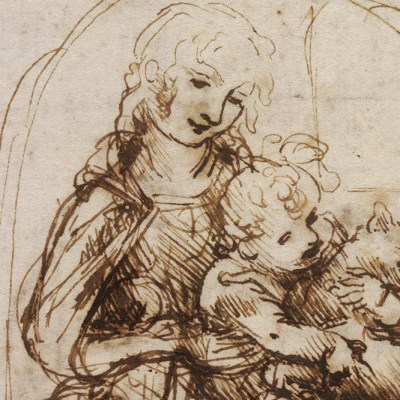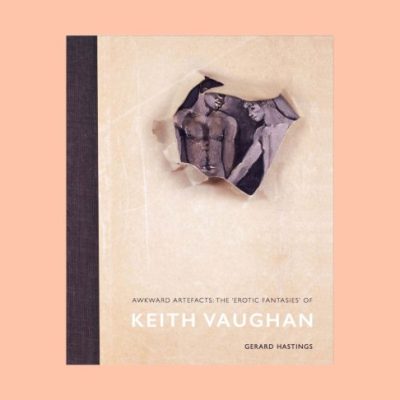Duncan Grant was appalled in 1954, when the Home Secretary’s decision to crack down on ‘male vice’ led to the Montagu trial and the conviction of its defendants for ‘indecency’. ‘I feel disgusted and disgraced to belong to a country that sends three young men to prison for having been to bed with someone,’ he wrote. ‘Very Private?’, an exhibition of Grant’s erotic drawings, is the first public display of a collection that passed in secret for decades. The curators at Charleston, where Grant lived with the painter Vanessa Bell, have taken their title for the exhibition from the warning cover note Grant placed on the pictures before gifting them to Edward Le Bas in 1959. Yet for illicit images these drawings are often surprisingly large and colourful, even exuberant. There is no shame here.
The drawings range from the tender and the theatrical to the downright fantastical; they are more about play and performance than the erotic. Satyrs cavort on the grass while managing to retain a firm grip on each other’s genitalia, there are enough men in costume to populate a Village People video and some of the poses are fairly acrobatic. A blond, curly-haired figure recurs – presumably Paul Roche, the lapsed priest with whom Grant was infatuated during the period that many of the drawings were made, but he could so easily be a hero of Greek myth, too.
Untitled Drawing (c. 1946–59), Duncan Grant. The Charleston Trust; © The Estate of Duncan Grant, licensed by DACS 2022

There is nothing very shocking to the modern eye in the drawings: especially not for anyone acquainted with Bloomsbury’s well-aired romantic laundry. The most subversive picture is perhaps Grant’s sketched chain of male figures, all of them muscular, all of them erect and all of them close enough to penetrate each other. But, even then, it is the half-familiarity of the composition that startles most. It could almost be a Grant design for a mural, but it also recalls Singer Sargent’s famous painting of soldiers clinging to each other after being blinded by gas. Grant’s version offers a very different presentation of masculinity, of ritual and male contact. Then again, it also looks most like an impromptu disco orgy in an artist’s studio.
The secrecy is best-conveyed by the sense that these drawings, some of them seemingly whipped off at speed in pen or pencil, were made on whatever scrap paper was to hand. One – that same blond-haired white man again, this time being grasped decisively by an intent black lover – was clearly drawn on repurposed paper, so that on the verso a gent in a top hat looks on in some alarm. Intentional or not, there is a knowing humour in the juxtaposition. (Among the contemporary art included in the exhibition, Christopher Shannon has done something similar by superimposing images of male wrestlers on to fancy crockery.) In Grant’s composition, there is a sense of the double life lived by queer men in a criminalising age, of the fine line between respectability and ‘deviance’, between public and private life.
Untitled (2022), Somaya Critchlow. Photo: Prudence Cuming Associates Ltd; courtesy the artist and Maximilian William, London; © Somaya Critchlow

The 40 or so drawings by Grant make up only a tenth of the total collection yet the presence of contemporary responses here is, on the whole, a welcome intervention. Grant’s work is too decorative, its shapes too lissom and colours too accommodating, to dominate entirely. His drawings instead serve to unify the exhibition. In rooms teeming with the human forms, Alison Wilding’s abstracts act almost as a sorbet for the senses; refreshing in both palette and shape, fluid but not frenetic. And in a show that foregrounds male desire and male bodies, Somaya Chritchlow’s watercolours of female nudes, conveyed in washes of grey, make the rest seem brash and blatant. Almost exclusively they show a woman alone and, although they have a voyeuristic quality, the mood is more private, more intimate, than Grant’s secret couplings. Kadie Salmon’s hand-coloured photographs taken at Charleston convey a wistful sense of the forbidden. In one, three ghostly female figures are entangled on an armchair, their translucent forms repeating like echoes of each other’s desire. They are dressed in white gowns that could be Grecian or could just as easily be Victorian nighties of the kind worn by women in Grant’s youth. To a 21st-century eye they evoke fading histories of inadmissible encounters and long legacies of secret loves.
‘Very Private?’ is at Charleston, East Sussex until 12 March 2023.



